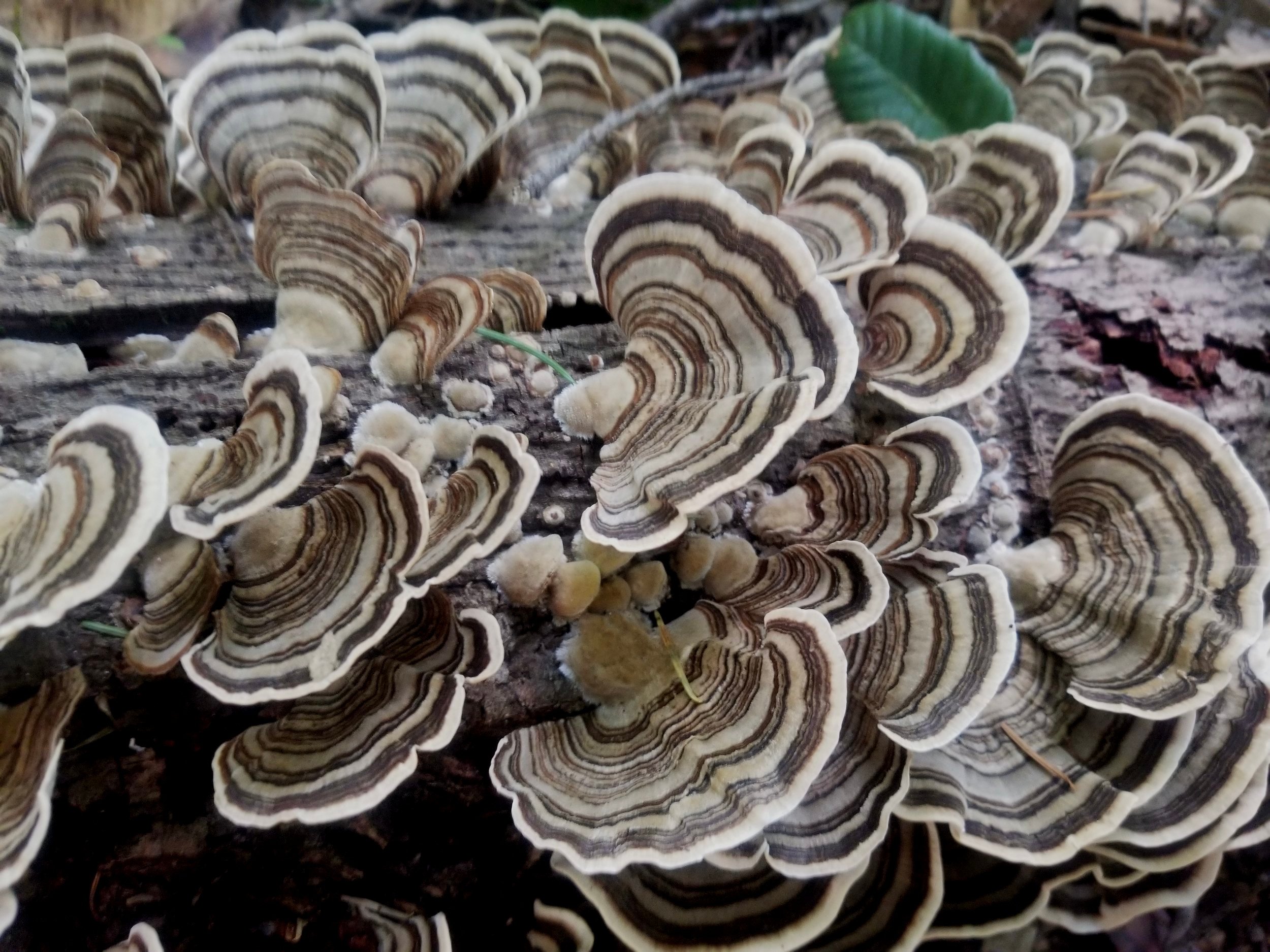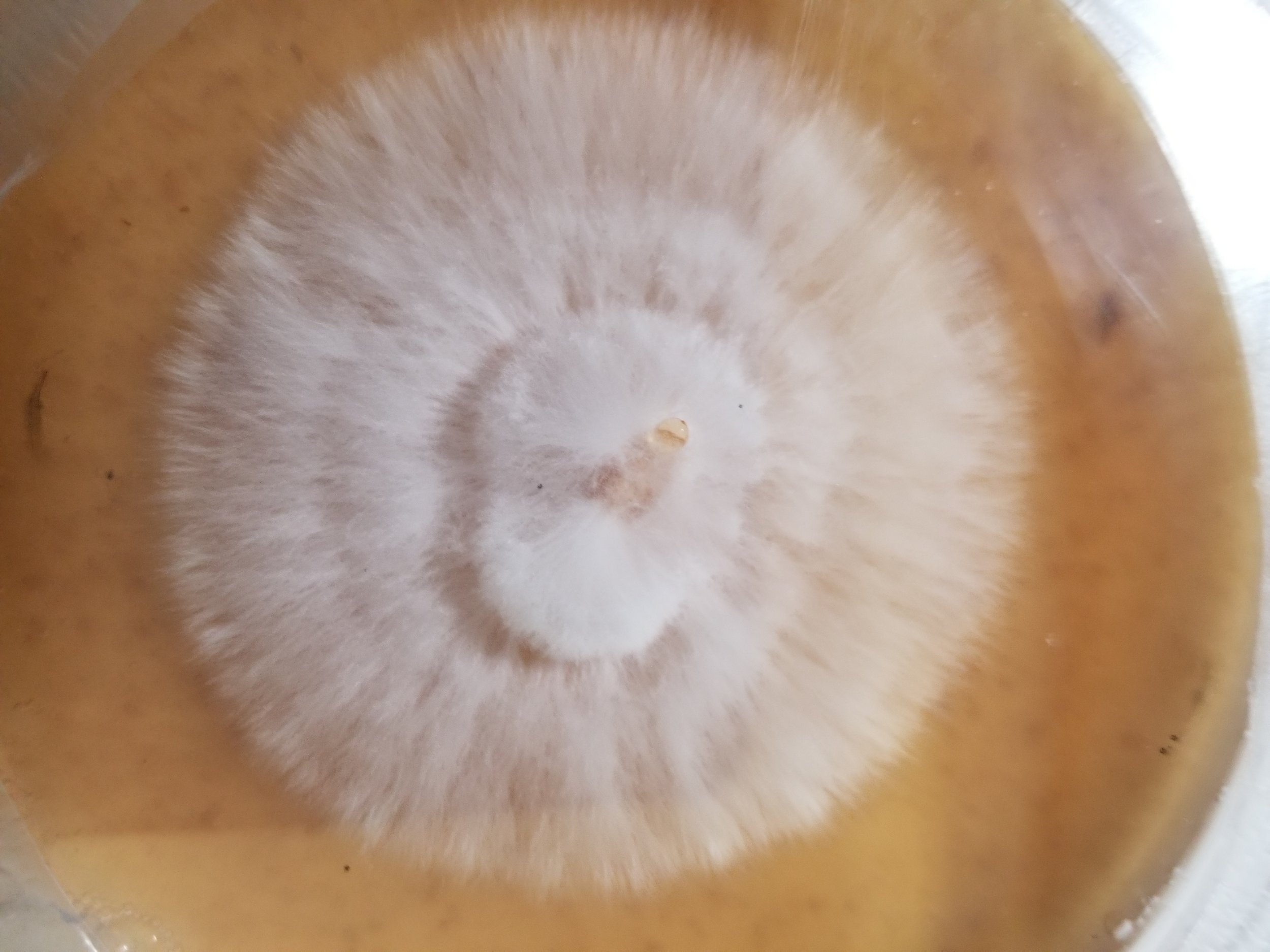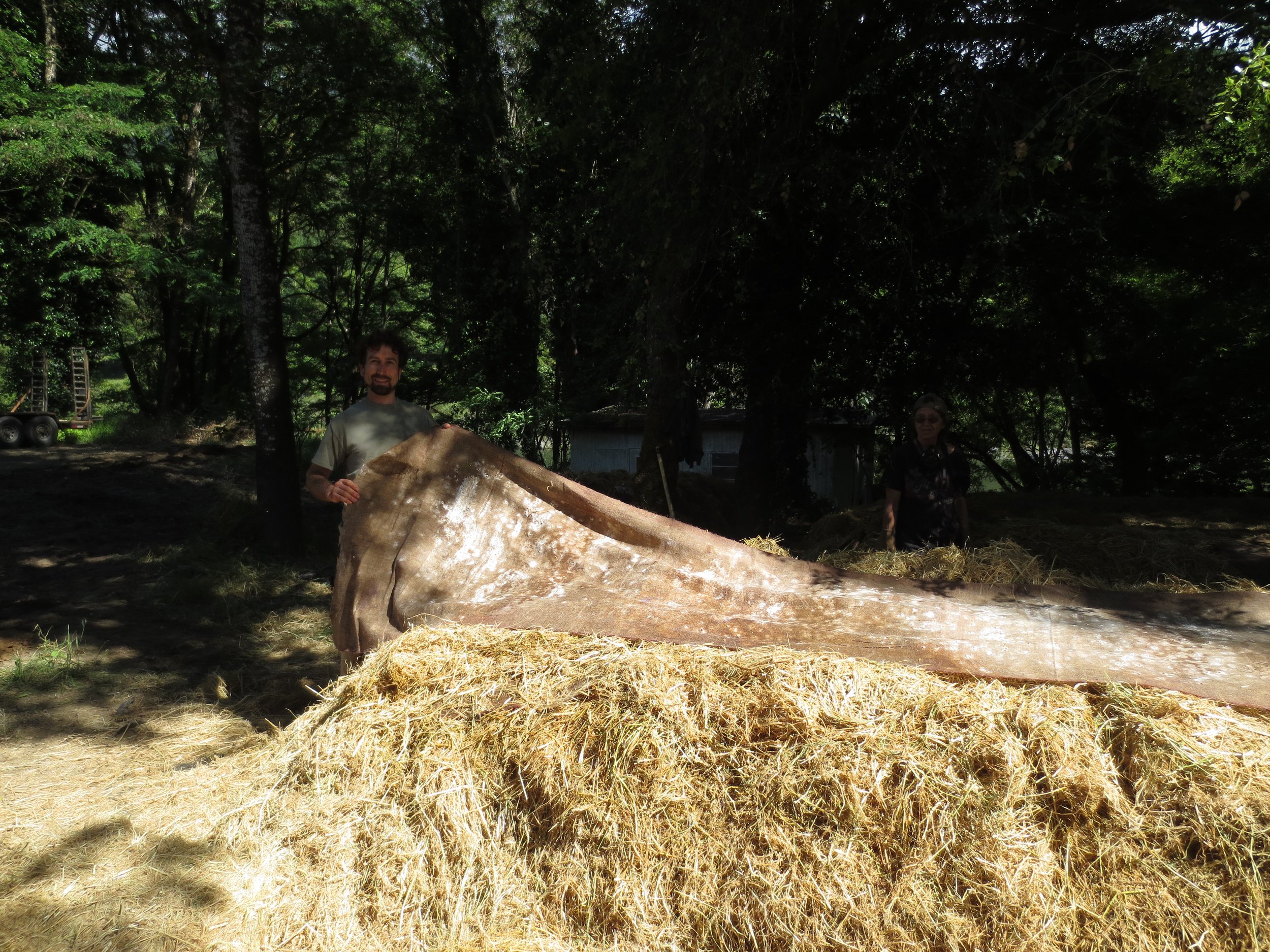
Mycotechnologies
Mycoremediation
Mycoremediation is the use of fungi to break down harmful pollutants into simpler forms that are safe for the environment. Fungi have been successfully used to remediate pollution in soil and water.
Mycelium is the vegetative portion of fungi, similar in form and function to the roots of a tree. The enzymes that fungi exude upon their substrate are capable of digesting toxic hydrocarbons and converting them into carbohydrates. The exponential growth rate of mycelium allows for rapid inoculation, colonization, and treatment of contaminated sites. The North Coast has an ideal physical climate for mycoremediation and many of the species used in mycoremediation are already present in our forests and soils.
Fungaia Farm offers many very aggressive fungal strains for use in mycoremediation. Our state-of-the-art laboratory and incubation facility can produce large amounts of mycelium to facilitate soil remediation projects. Check out our Mycoremediation Report from our diesel fuel clean-up in Orleans, California, and a write-up about our project in Paste Magazine.
Contact us if you are interested in learning more about mycoremediation.
Mycoremediation Project in Orleans California
Mycoremediation Burlap Rolls
Colonized Burlap Rolls for Mycoremediation
Our custom-made hydrocarbon-free burlap myco-rolls can be used for soil remediation and woodchip inoculation.
Portable and Cost Effective
Made to order these myceliated burlap rolls can be transported to the remediation site offering a fast cost-effective method for remediating a wide variety of chemicals. Contact us for a price quote.
Mycofiltration
Mycofiltration is the use of mushroom mycelium as a biological filter for the treatment of water pollution. Mycofilters are constructed of readily available materials (such as straw and woodchips) that are held in place through a permeable membrane (such as burlap) and inoculated with mycelium. Road building, septic systems, farming, logging, and ranching practices can negatively impact the environment, especially streams and rivers. Erosion and pollution that result from these land-use practices degrade sensitive riparian habitats, impacting the myriad of plant and animal species that inhabit them. Mushroom mycelium can be used as a biological filter to reduce siltation and pollution of watersheds while increasing biological diversity and ecological succession.
Mycofilters can be installed in drainages and riparian areas to filter pathogens and pollutants. High levels of fecal coliform bacteria and petroleum products that enter rivers and streams during storm events can be significantly reduced through mycofiltration. In addition to pollutants, the high levels of silt that accompany storm events are detrimental to ecosystem health; salmonids and many other species suffer from effects from high levels of siltation. Mycofilters can filter silt and mitigate many of these impacts, improving habitat and water quality. Mycofiltration is also useful in the treatment of urban stormwater, which can be heavily contaminated with a variety of pollutants.
The binding abilities of the mycelium to the substrate allow forest and agricultural waste to be utilized in the construction of a living filter, capable of reducing pollution and erosion. Pathogens such as fecal coliform bacteria and petroleum products including diesel, oil, and gasoline can also be removed from contaminated soil and water. Mycofilters can be installed in proximity to a known source of pollution such as a farm or ranch as well as non-point source situations such as along roadsides and in riparian areas.
We are interested to continue to research and support the implementation of mycofilters. Check out this thesis and example mycofiltration implementation plan prepared by Humboldt State University graduate student, Riley Allen. Contact us if you are interested in pursuing a mycofiltration project of your own.














